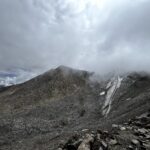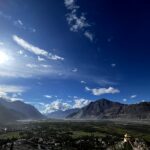In August 2024, Sharukh embarked on a nine-day bike journey across the majestic and rugged terrain of Ladakh, achieving a long-cherished dream of riding through its challenging roads. Ladakh, cradled amidst the towering Himalayas, is not just a region. it’s a mosaic of contrasts, colors, and cultures that stands apart from the rest of India. To truly understand Ladakh, one must explore it through three crucial aspects: its people, its terrain, and the profound presence of the Indian Army.

A) The People and Culture of Ladakh: A World Apart
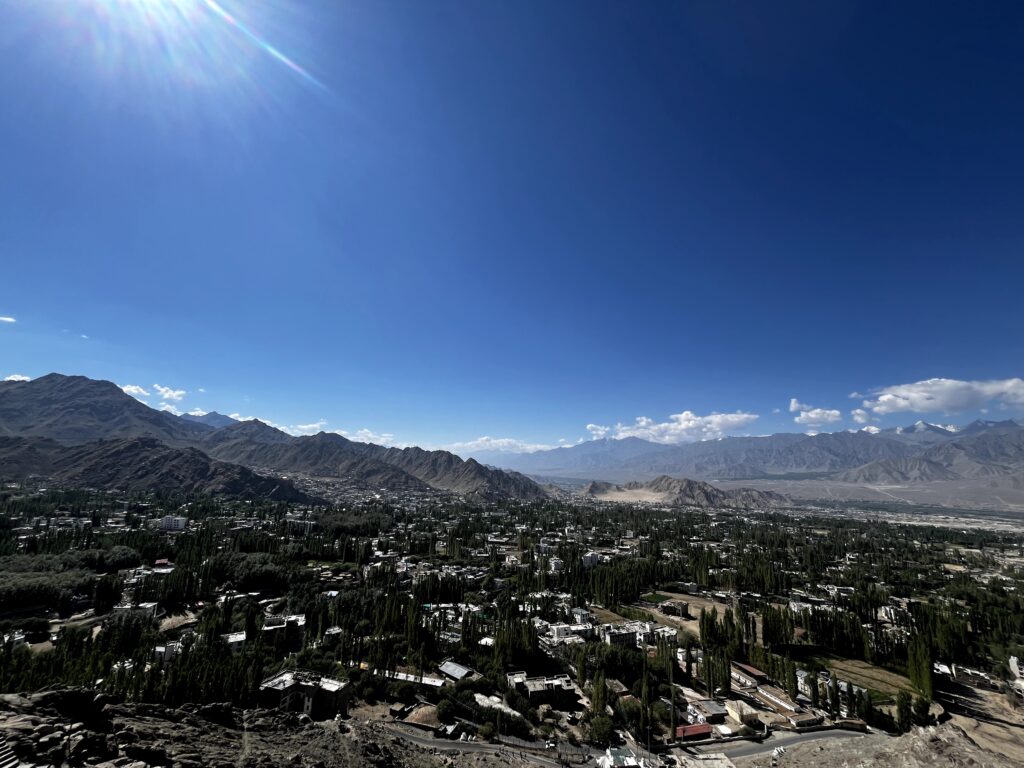
Ladakh, a place where the cultures of the mountains merge, offers a striking contrast to the rest of India. Here, the rhythm of life is different. The people of Ladakh are known for their unique way of living, one that prioritizes cleanliness and simplicity. The locals take immense pride in keeping their surroundings pristine, rarely contributing to pollution or garbage. a stark contrast to many tourists who tend to leave behind a trail of litter.
The Ladakhi culture is shaped largely by its geographical and historical context. With the proximity to Jammu and Kashmir, Ladakh is predominantly inhabited by Muslims (mostly Shia) and Tibetan Buddhists. The languages spoken, such as Ladakhi, Purgi, and Balti, are heavily influenced by Tibetan dialects, so much so that visitors from Tibet can easily communicate with the locals.
Food in Ladakh is a delightful mix influenced by Tibetan culture. Common dishes include momos, noodles, and various Tibetan or Chinese-style preparations, especially in tourist spots. This culinary landscape might also reflect commercial catering to the influx of visitors.


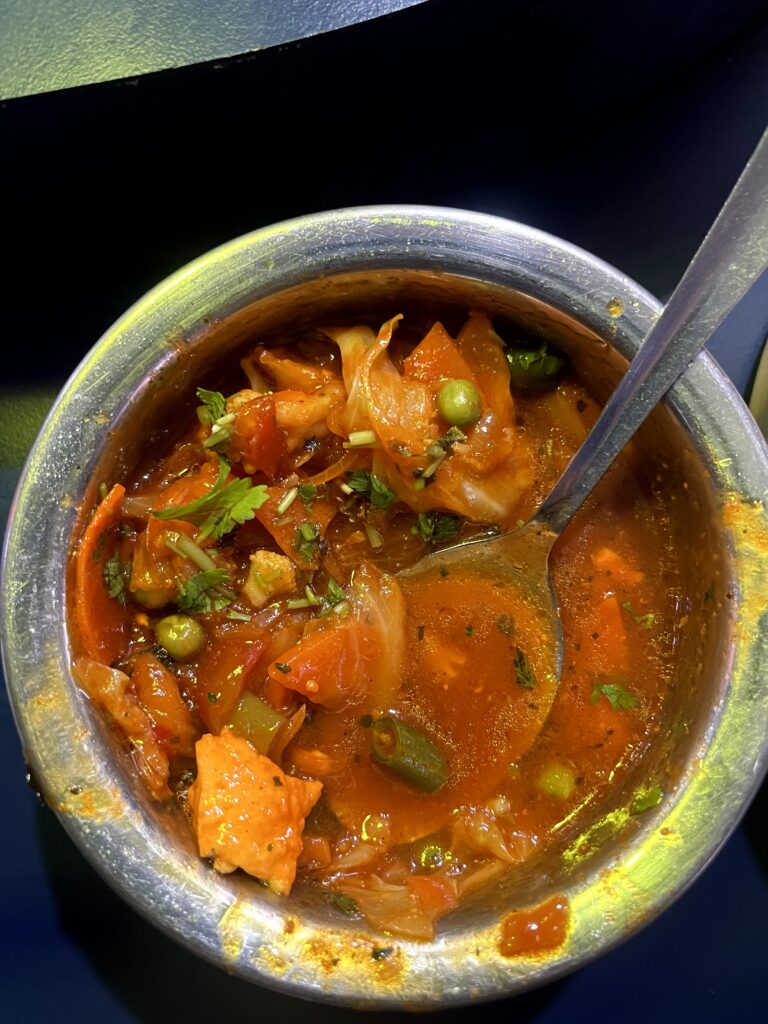
When it comes to dress, there is an interesting blend of traditional and modern attire. While many locals can be seen in modern outfits like track pants and T-shirts, men often don monk’s robes in villages, showcasing the cultural diversity of the region. Women’s clothing, too, varies from traditional to modern, and they are often seen roaming freely at night, displaying a progressive sense of freedom and security that can feel different from much of mainland India.
The local economy largely depends on tourism, as there are no significant industries to offer employment. Walking through Ladakh feels like stepping back into India of the 1990s, where simplicity reigns. Leh, the capital of Ladakh, is much like Chennai for Tamil Nadu. it serves as the central hub for markets, food, clothing, and hotels.
Sharukh’s journey took him to several notable places, such as Turtuk Village, Kargil, and Srinagar. Turtuk, a village in Ladakh, was part of Pakistan until 1971, when it was taken over by Indian forces following the Indo-Pakistani War. This shift in control not only redrew borders but also reshaped the identity and daily lives of its residents, who found themselves adapting to a new nation while preserving their unique Balti culture. It still retains a distinct cultural influence from across the border, giving it a unique character. In contrast, Srinagar, with its famous Dal Lake and vibrant market boats, offered an entirely different experience, blending natural beauty with local commerce.
Interestingly, Ladakh experiences little crime compared to the rest of India. While Kashmir is often perceived as poor and fraught with tension, Ladakh appears almost untouched by theft or robbery, a place where trust still thrives. Sharukh often left his keys in the bike, his belongings resting on the seat, and disappeared into the landscape for sightseeing or adventure, never once worrying about them. It was a rare sense of security, a stark contrast to the guarded caution he was accustomed to elsewhere, further highlighting the differences between the mountains and mainland.
B) The Terrain: Beauty and Peril in Equal Measure

Ladakh is an adventure rider’s paradise. Nestled at high altitudes in the Himalayas, the terrain is both stunning and treacherous. Summers are mild, with temperatures ranging from 15 to 30 degrees Celsius, but winters can be brutally cold, with temperatures plummeting to -40 degrees Celsius. This extreme climate forces many locals to migrate to the mainland during winter, leaving only the Indian Army to brave the harsh conditions.
The landscape is a kaleidoscope of changing terrains. Every 10 kilometers brings a new experience. From off-road trails to paved roads, from desert-like expanses to snow-covered peaks. The altitude, which can reach up to 17,000 or 18,000 feet at mountain passes, poses a challenge for even the most seasoned riders. The lack of oxygen at such heights often causes headaches and other symptoms of altitude sickness, taking a toll on those not acclimatized to the environment.
In summer, as the snow begins to melt, the terrain transforms, revealing a stark, desert-like landscape devoid of greenery. Unlike the lush valleys of Kashmir, Ladakh offers a raw, rugged beauty that captivates visitors, but also comes with its share of dangers.
C) The Indian Army: A Constant Presence
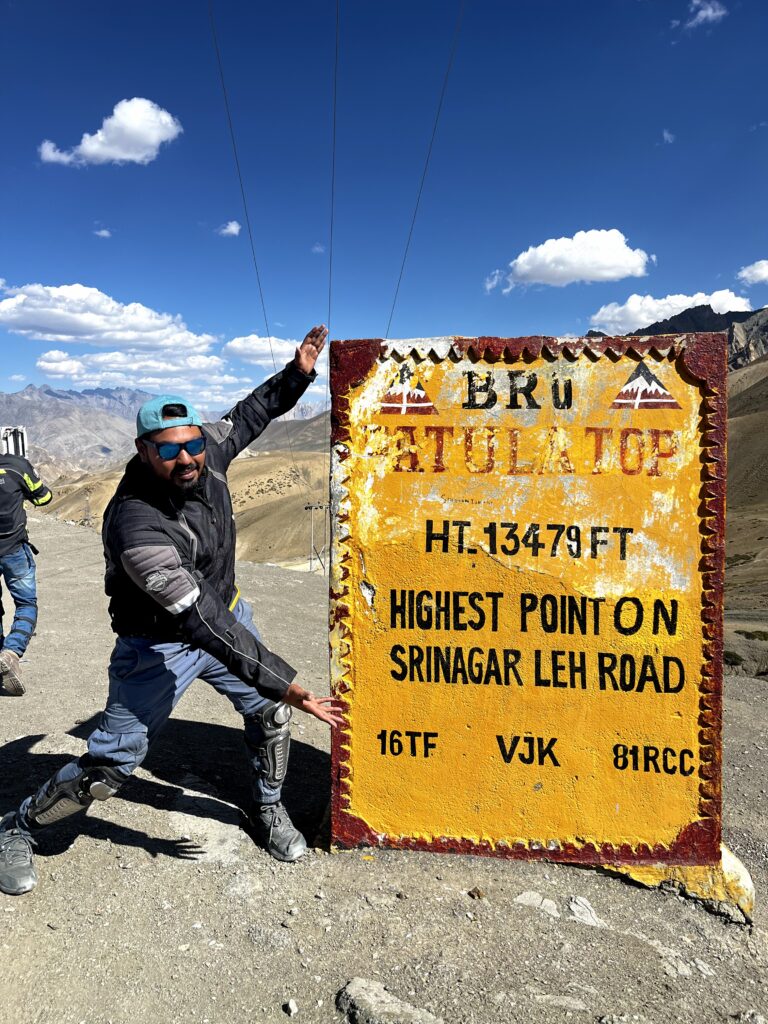

The Indian Army is an omnipresent force in Ladakh, given its strategic importance. The roads are built and maintained by the army, and can be closed at any time for military reasons. The proximity of both China and Pakistan, just 20 to 30 kilometers away, makes Ladakh a hotbed of military activity. War memorials are scattered across the landscape, serving as reminders of the region’s turbulent history.
Communication is also tightly controlled. prepaid mobile connections do not work, and internet access is often cut off by the army in case of perceived threats or security issues. The military style of road milestones and frequent checkpoints reflect the ongoing tensions and the ever-watchful presence of the Indian forces.
In Kashmir, the situation becomes even more intense. Sharukh was struck by the sight of soldiers stationed every 50 meters, their presence heavy and their actions unpredictable. The army personnel, often coming from different parts of India, sometimes view the local populace with suspicion, leading to instances of discrimination and conflict. This has created an atmosphere of unease, where the local culture and military occupation coexist, often uneasily.
Yet, perhaps one day, peace will return to the valley. The locals may once again feel like an integral part of India, their identity embraced rather than questioned. And maybe, in time, the army will see them not through the lens of suspicion, but as fellow countrymen, bound by a shared land and history.
The Journey’s Highlights: A Glimpse Into the Heart of Ladakh
Sharukh’s trip covered some of the most iconic places in the region:
- Leh: The bustling heart of Ladakh, with its vibrant markets and historical landmarks.
- Nubra Valley: A desert in the mountains, famous for its two-humped camels, offering a unique blend of natural beauty and adventure tourism.
- Turtuk Village: A small settlement that was part of Pakistan until 1971, still retaining a cultural connection to its past.
- Pangong Lake: Known for its striking blue waters, featured in the climax of the movie “3 Idiots.” Despite its beauty, the lake remains largely uninhabitable, with half of it lying in China.
- Kargil: Known for the Kargil War, it houses war memorials that stand as testaments to the sacrifices made by the Indian Army.
- Srinagar: With its iconic Dal Lake and houseboats, Srinagar offers a unique experience of life on water, from market boats to tea vendors drifting by.
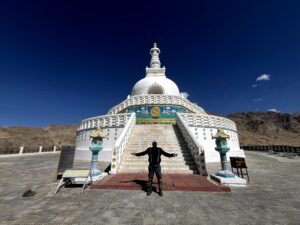


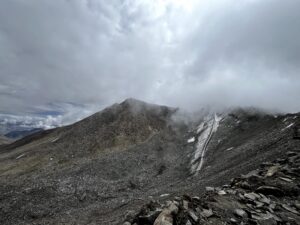

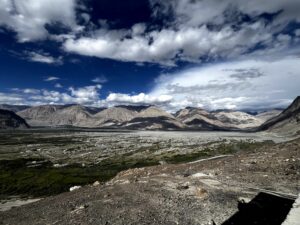

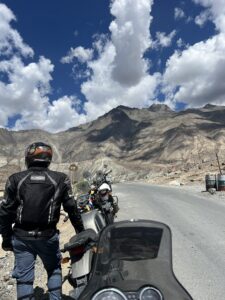
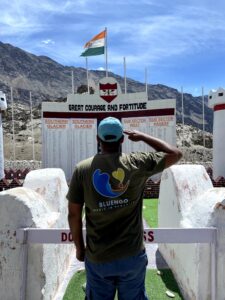

Sharukh’s journey through Ladakh was not just a ride through mountains. it was an exploration of a place where cultures converge, terrains challenge, and the Indian Army maintains a vigilant watch. Ladakh is a land of contrasts, serene yet turbulent, barren yet beautiful, traditional yet progressive. For Sharukh, it was a dream fulfilled. For anyone who visits, it is a journey into the soul of the Himalayas.















